Last week at The Old Forge I saw and photographed a new species; new to me and new to the British Isles.
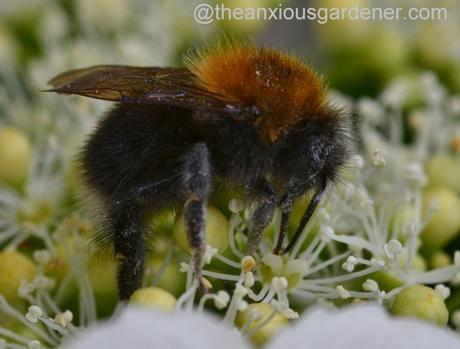
The tree bumblebee (Bombus hypnorum) is a recent arrival to these shores – first recorded in Wiltshire in 2001. Since then it has spread quickly throughout England, Wales and southern Scotland. As they are common throughout mainland Europe as far north as the Arctic Circle, bumbleologists (a word I’ve just made up) were puzzled why they weren’t present in the UK.
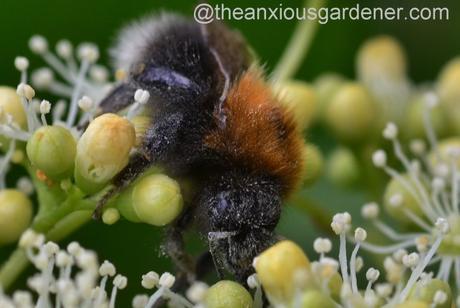
Well, they’re here now. A hibernating queen might have arrived on an imported plant but the English Channel isn’t too wide for a bee to fly across … especially with a following, favourable wind.
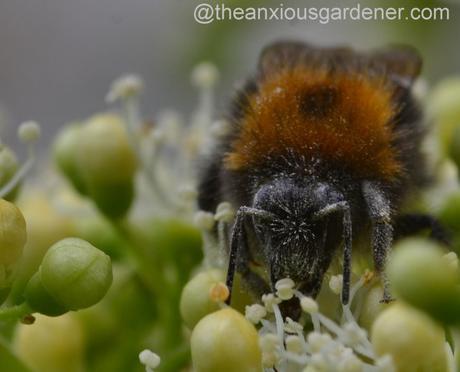
This particular worker was busy feeding on the flowers of Hydrangea petiolaris.
They get their common name from building nests in tree-holes and will readily use a bird nest box. Nesting high up they don’t compete for sites with our mostly ground nesting, more familiar bumbles. (If you do find a colony in your garden’s tit-box the advice is – leave well alone. The colony will die out naturally within a few months … and you’ll interfere with it at your peril. Tree bumblebees are aggressively defensive if their nest is disturbed. As am I).
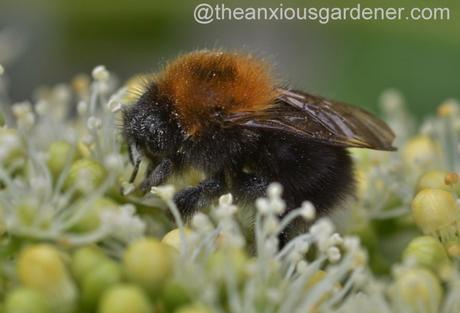
They are unlike any other British bumblebee and very easy to identify: an orange or reddish thorax, black or dark gray abdomen with a noteworthy white tip or tail. Given the sorry state of our other bee populations, I think we should welcome them with open arms as a useful and energetic pollinator. Of course, there is a worry that a new species might have unforeseen consequences for our existing ‘British’ bees but, as yet, there is no evidence that they are any cause for concern. (Might I rue those words? Not from what I have read … but then I’m no bumbleologist).
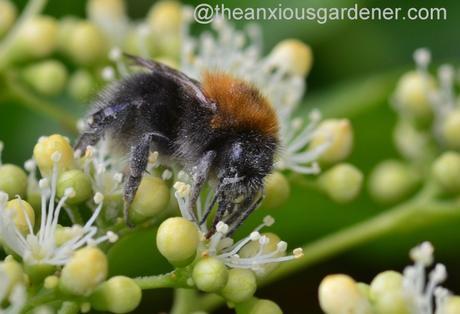
If you should see one (and rest assured, in an English garden you probably will) please take a photo and record your sighting either with the Bees, Wasps & Ants Recording Society or, as I did, with the Open Air Laboratories (OPAL) network. Any sightings in Scotland would be particularly welcome.
(With thanks to Clive Hill’s article on the Bumblebee Conservation website – which is a great source for further information).

